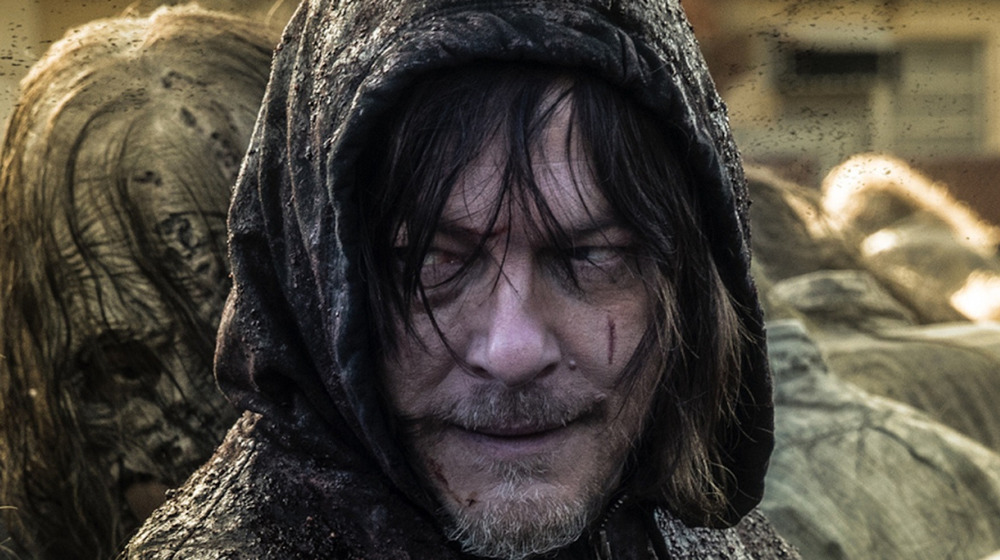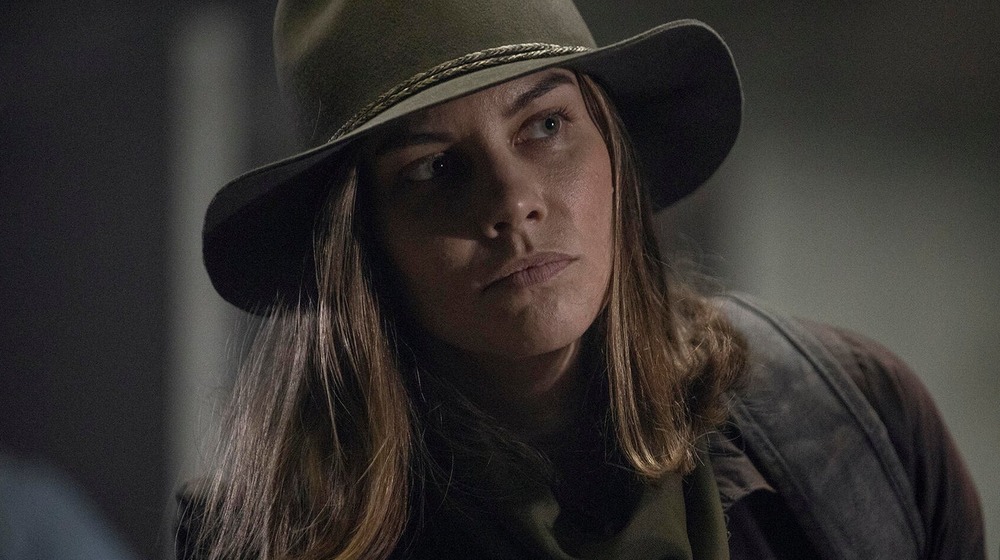Why The Walking Dead Season 10C Looks So Different
The COVID-19 pandemic has necessitated countless changes, big and small, to the production of many of your favorite shows. For The Walking Dead, the very existence of the six episodes making up the extension to season 10 — an extension which debuts February 28 — is something that was driven by the pandemic. With the eleventh season set to require some of the biggest, and busiest, sets in the show's history, as it tackles the Commonwealth, it was decided to delay production on those elements while the pandemic was raging and instead fill the gap between season 10 and 11 with a mini-season of smaller, more character-focused stories that could be filmed in safer conditions.
With that as the goal, a number of smaller, behind-the-scenes measures were also brought into place. There are masks and face shields, obviously, and more hand-washing. Make-up trailers are no longer shared. People who don't need to see one another are generally kept apart. The show even brought in its own testing lab to eliminate delays on that aspect.
If all goes well –– and "Mask Lady" doesn't become the new "Jeans Guy" –– these precautions won't show up on camera. But the series is taking another step that's more likely to be noticed by hardcore fans, a change being made not in front of the camera but in it. Insider reports that for the first time in its ten seasons, The Walking Dead will be shot primarily using digital cameras instead of film.
Why The Walking Dead has shot on film until now
It is, in some ways, a change that has been a long time coming, but also one that's long been resisted. Director of photography Stephen Campbell told American Cinematographer magazine that the series had previously experimented with going digital as early as during season two, but decided to continue shooting primarily on 16mm film because it felt more appropriate to the subject matter, something that harkened visually back to the classics of the genre. "Because the show, being on 16mm, has additional grain in it. It has motion blur, if only because it's still going through a gate. That adds a bit of a classic horror vibe to the show."
Beginning with the extension to the tenth season, those effects will have to be replicated in post instead, which may lead to some subtle differences in the series' visual identity — differences which people who have watched, say, 147 episodes of a show, might be able to pick up on. But showrunner Angela Kang explained that the switch made sense as another small precaution to make production safer.
"The decision came about because there are fewer 'touch points' with digital than 16mm," Kang told Insider. "We don't have to swap out film every few minutes, for example." Kang also said the switch to digital will also continue through the filming of the show's eleventh and final season.
The six-episode extension to season 10 of The Walking Dead begins airing on AMC this Sunday, while the first episode is already available on the streaming service AMC+.

